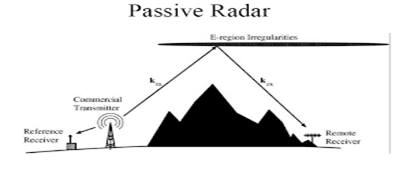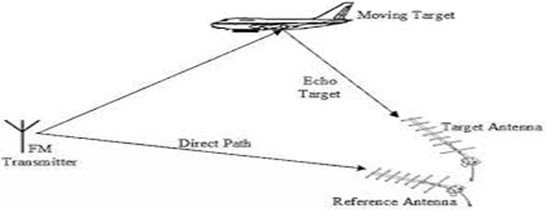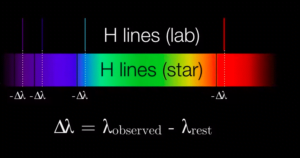In the last few years, the challenge of protecting people both in public and in crowded places has dramatically risen due to terrorist acts and today’s international situations. To prevent this, organizations have come up with two radar systems, active and passive, to detect objects and evaluate the distance between them and a single antenna. What are active and passive radar systems exactly? Nevertheless, the broad number of different tactical radar systems and their application can be overwhelming; most of them rely on one of these two leading technologies. Before discussing the pros and cons of the two systems, let us investigate the basics of how the radar sensor operates.
| Topic | Active Radar | Passive Radar |
|---|---|---|
| Definition | Sends out radio waves and detects their reflections off objects. | Utilizes existing signals from external sources and analyzes their disruptions to detect objects. |
| Operational Advantages | – Scans large sections accurately. – Detects smaller targets effectively. – Operates day and night. – Penetrates vegetation and soil. – Resistant to jamming. – Utilizes multiple transmitters. | – No electromagnetic pollution. – Low detection to altitude targets. – Multi-angle sensing. – Low-cost and maintenance. – Suitable for rugged terrains. – High detection update rate. – Relies on third-party illuminators. |
| Operational Disadvantages | – More susceptible to system failure. – Requires complex transmitter setups. | – Bulky sensors prone to cooling problems. – Limited to one frequency at a time. – Potential system failure due to a single transmitter collapse. |
| Applications | – Military, security, and airport applications. – Detects human movement effectively. | – Sea scenarios without being seen. – Gas filter applications. – Sensor chain, strip surveillance, etc. – Detects non-emitting targets. – Areas without active radar coverage. |
| Key Differences | – Utilizes a single transmitter. – Known by many people. – Can be jammed using absorbing and reflecting methods. – Gathers substantial data, but location can be revealed. – Active emission makes it detectable. | – Utilizes multiple transmitters. – Less commonly known. – Less susceptible to jamming. – Gathers less information, harder to observe. – Passive nature makes it less detectable. |
| Final Thought | – Active radar is commonly used, easily sensed by enemies. – Passive radar offers an alternative with operational advantages. – Passive radar doesn’t emit signals, relies on external sources. – Both systems detect objects and evaluate distances. | – Passive radar’s advantage lies in undetectability and using external signals. – Intended for scenarios where active radar is unsuitable. – Passive radar senses ground moving targets using multiple sources. |
What is radar?
Radar is a short form of radio detection and ranging. Besides, it’s a communication that uses waves to identify and pinpoint objects. Initially, it was used by ship captains to communicate with their agencies’ radio towers. With time, they noticed that objects in towers and the craft caused interruptions hence preventing effective communication. Therefore, what began as an inconvenience progressed to new defense strategies for water and the land and the sky.
How does the radar work?
The radar operates by sending out radio waves and waiting for the reply back, just like an echo. The time is taken for the wave to return shows how far away the object is. Besides, sending signals out from distinct points helps determine the position of the object. Usually, the radar system has an antenna, a radio transmitter, and objects for waves to reflect on. The antenna passes the information to the receiver, which intensifies the echo that bounces off the objects and signals displays them to the user in a better typical visual way.
Passive radar systems

what is passive radar?
Passive radar works by taking one signal at a single frequency and divides it between distinct strategically placed transmitters to maximize its strength and range. With this system, you receive the regular information from the wave response and get to know the object’s distance and position based on the tactical transmitters’ interruption and t way they relate.
Operational advantages of passive radar systems
- The system has no omissions (there’re no active signals invisible to radar search)
- There is no electromagnetic pollution.
- Also, the system has low detection to altitude targets.
- The system has tremendous multi-angle sensing when working on many illuminations.
Other advantages
- The system requires low cost and maintenance.
- It’s also suitable for working on rugged terrains.
- It has a high detection update rate.
- Due to its low costs sensors when working, it’s easily installed.
Disadvantages of the passive radar
- Reliance on the third-party illuminator
- The sensors of the system are bulky, thus prone to cooling problems.
- The app has only one beam, which makes it only send on one frequency at a time.
- It has only one transmitter and therefore has a high capability of system failure due to a single collapse within the transmitter.
Applications of the passive radar system
- It’s applicable in see without bin seen scenarios.
- Gas filer
- Sensor chain, strip surveillance, sensor clusters, and improved spot surveillance.
- Detect non-emitting targets.
- Radar sensors where there’s no active radar.
Active radar system

what is Active radar?
That is the most common system whose principle of operation is simple. A radio signal is released from a transmitter and bounces off the objects the wave encounters. Usually, the signals are reflected in the emitter position, where the receiving antenna picks up the echoed signals. Furthermore, when the transmitter and the receiver of radar are composed, the radar is monostatic.
Advantages of active radar systems
With this technology, radio waves are sent out at different frequencies in many directions at the same time without changing any transmitter. While passive radar is capable of scanning large sections, active radar is more accurate. Additionally, by scanning at distinct frequencies, it brings back better data to its users.
Besides, active radars are not likely to experience system failure because they rely on not just one but dozens of TRMs to transmit signals.
Benefits of active radar systems
- It’s better resistant to jamming.
- It’s good at detecting smaller targets.
- It Can be operated day and night.
- The system is capable of penetrating vegetation and soil.
Disadvantages of active radar systems
- The system is known to be the most innovative and technologically advanced type of tactical radar system.
- The system has no spectral features.
What is the difference between active and passive radar based on?
- Transmitters
Active radar relies on a larger transmitter, while passive radar has multiple transmitters. Besides passive radar, the receivers are located at the same position; thus, it’s referred to as monostatic radar, whereas passive radar systems where receivers are lactated in different places. That is why it’s commonly called bistatic radar.
- Familiarity
Most people are well versed with active radar as compared to passive radar systems. Active radar is easily operated because it relies on waves. Passive radar depends on signal transmission from different centres, thus making it difficult to operate it.
- Jamming
When referring to passive radar jamming, you’re talking about chaff, which absorbs and reflects; however, it doesn’t transmit. When referring to active radar jamming, it merely means absorbing, reflecting, and transmitting.
- Gathering information
Active radar is best in gathering enormous data but also gives away the location of information convention stations. That implies that when being traced, the place can be easily targeted. On the contrary, passive radar assembles less information, and the gathered info is hard to observe by other people.
My final thought
In the military, airports, and security applications, detecting human movement is progressively essential. Generally, most radar systems are active systems that are easily sensed by the enemy. Accordingly, the passive radar system is designed to become an alternative to an active radar system that offers a more operational decisive advantage in places where the passive radar cannot be located. Passive radar doesn’t emit signals of its own; hence it couldn’t be blocked. Accordingly, passive radar uses many distinct transmission sources from many locations to sense ground moving targets, especially humans. These two systems are designed to detect objects and evaluate the distance between the objects and a single antenna or antenna group.




Pingback: Different Types Of Remote Sensing - LIDAR and RADAR